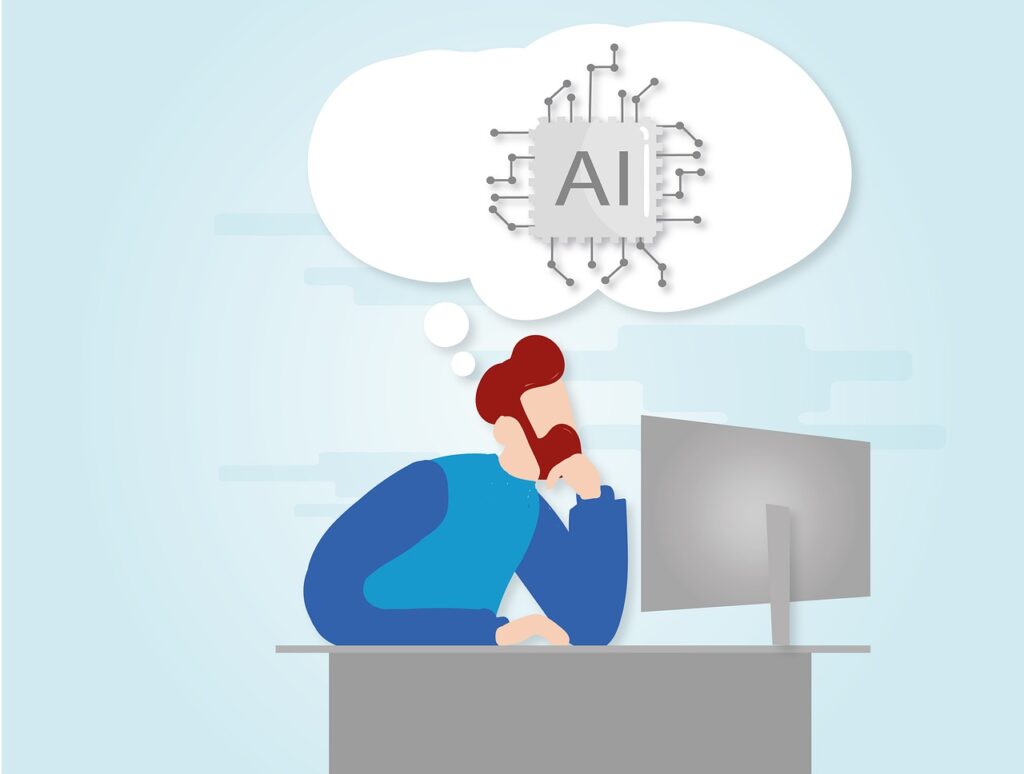In its simplest form, a chatbot is a computer program that facilitates written or spoken conversations by humans with computers in a manner that emulates communicating with a real person.
Chatbots can be as basic as elementary algorithms that are able to answer a simple question with a simple, one-line answer, or as advanced as digital assistants that learn and evolve to solve more complicated scenarios through the information they collect and process.
Chatbots use artificial intelligence to answer these queries using specific rules and techniques
So, what is artificial intelligence?
Artificial intelligence (AI) allows computers to learn from experience and perform tasks requiring cognition, which is defined by cambridgecognition.com as,” the mental action or process of acquiring knowledge and understanding through thought, experience, and the senses.”
Alan Turing, the brilliant mathematician who cracked the German Enigma code, once asked:
“May not machines carry out something which ought to be described as thinking but which is very different from what a man does?”
He believed it was possible to write software that allows computers to make observations and learn from those observations. He further postulated that computers would carry out tasks previously done only by humans without the guidance of a human programmer.
Kurt Cagle, data scientist, futurist, and writer, once wrote in an email that AI is “basically the results of our attempting to understand and emulate the way that the brain works and the application of this to giving brain-like functions to otherwise autonomous systems (e.g., drones, robots and agents).”
Simply put, AI works by combining massive quantities of information with instructions that allow the computer to learn from recognizable patterns in the data.
AI attempts to simulate the way a human brain functions by using the following techniques shown in the SAS (SAS is specialized AI software) Primer:
“Machine learning automates analytical model building, to find hidden insights in data without being programmed to look for something in particular or draw a certain conclusion.
Neural networks imitate the brain’s array of interconnected neurons, and relay information between various units to find connections and derive meaning from data.
Deep learning utilizes really big neural networks and a lot of computing power to find complex patterns in data, for applications such as image and speech recognition.
Cognitive computing is about creating a “natural, human-like interaction,” as SAS puts it, including using the ability to interpret speech and respond to it.
Computer vision employs pattern recognition and deep learning to understand the content of pictures and videos, and to enable machines to use real-time images to make sense of what’s around them.
Natural language processing involves analyzing and understanding human language and responding to it”.
There are two primary types of chatbots:
Task-oriented (declarative) chatbots are single-purpose programs that perform only one task. They produce automated responses to questions that emulate a human response and can respond to common questions that typically don’t involve more than one variable.
Data-driven and predictive (conversational) chatbots are commonly called virtual assistants or digital assistants and are more complex and personalized than task-oriented chatbots. They utilize predictive intelligence and analytics to facilitate personalization based on past behavior and user profiles. Amazon’s Alexa, Apple’s Siri, Samsung’s Bixby, and Google Assistant are examples of predictive data-driven chatbots.
ChatGPT, which was introduced in November of 2022 by a company called OpenAI, has been the topic of intense discussion because of the economic, moral, and ethical questions raised by this highly advanced chatbot.
For example: if AI displaces virtually the entire workforce, what does one do to make a living? Who is responsible for AI mistakes that cause grievous harm. And last but not least, what if AI decides that humans are a detriment to the planet? These are but a few of the many questions to be answered.
It is reported to have passed the AMA medical exam, written poetry and performed many other “thinking’ tasks.
The verdict is still out on whether AI will become the evil master of the human race as in dystopian movies like I, Robot, or Terminator, or be a benevolent benefactor to mankind.











